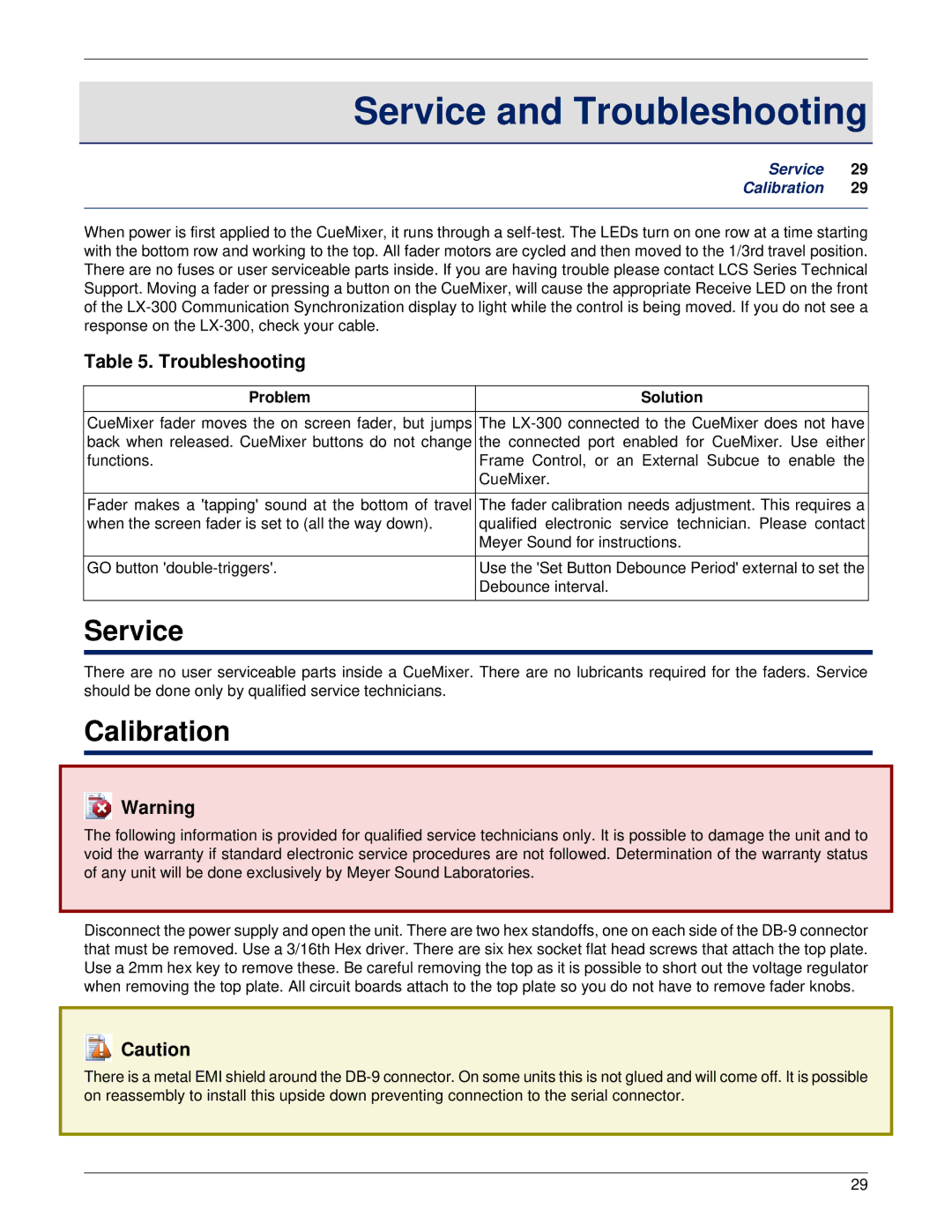
Service and Troubleshooting
Service 29
Calibration 29
When power is first applied to the CueMixer, it runs through a
Table 5. Troubleshooting
Problem | Solution |
CueMixer fader moves the on screen fader, but jumps back when released. CueMixer buttons do not change functions.
Fader makes a 'tapping' sound at the bottom of travel when the screen fader is set to (all the way down).
GO button
The
The fader calibration needs adjustment. This requires a qualified electronic service technician. Please contact Meyer Sound for instructions.
Use the 'Set Button Debounce Period' external to set the Debounce interval.
Service
There are no user serviceable parts inside a CueMixer. There are no lubricants required for the faders. Service should be done only by qualified service technicians.
Calibration
![]() Warning
Warning
The following information is provided for qualified service technicians only. It is possible to damage the unit and to void the warranty if standard electronic service procedures are not followed. Determination of the warranty status of any unit will be done exclusively by Meyer Sound Laboratories.
Disconnect the power supply and open the unit. There are two hex standoffs, one on each side of the
![]() Caution
Caution
There is a metal EMI shield around the
29
